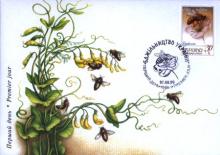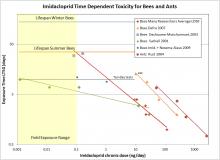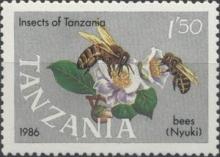Lecture: Decline and Fall of Bees; Pollinators in Peril
On April 19, 2011 from 12-1 pm Dr. James C. Nieh spoke about “The Decline and Fall of Bees: Pollinators in Peril” in the Events Room at the Biomedical Library. Honey bees face multiple natural and manmade dangers in their environment. Ironically, they are highly successful because of their use in modern agriculture, yet are suffering because modern agriculture imposes stresses from pesticides, diseases, parasites, and management practices such as mobile beekeeping. The research in Dr. Nieh’s laboratory explores natural threats and, more recently, the effects of pesticides on honey bee foraging. Come learn about the amazing solutions that bees have evolved in response to natural perils and how our use of pesticides may be contributing to their decline.










